MARCH–MAY 2025 | www.tlc4cs.org

» The Surprising Results of Excercise for Depression
» Embracing Spring Fever
» How Many Times to Discuss Underage Drinking
» Why Ignoring Mental Health in Teens Can Lead to Addiction

MARCH–MAY 2025 | www.tlc4cs.org

» The Surprising Results of Excercise for Depression
» Embracing Spring Fever
» How Many Times to Discuss Underage Drinking
» Why Ignoring Mental Health in Teens Can Lead to Addiction

Dual enrollment classes at Delta College are great because they can count toward high school graduation and college credit. Students can earn college credits that may be applied toward an associate’s degree or transferred easily to a Michigan university of their choice.
Another plus, dual classes are usually paid for by the high school which gives students the potential to finish college early and pay less overall.
Dual enrollment also prepares students for college-level academics and broadens their horizons.



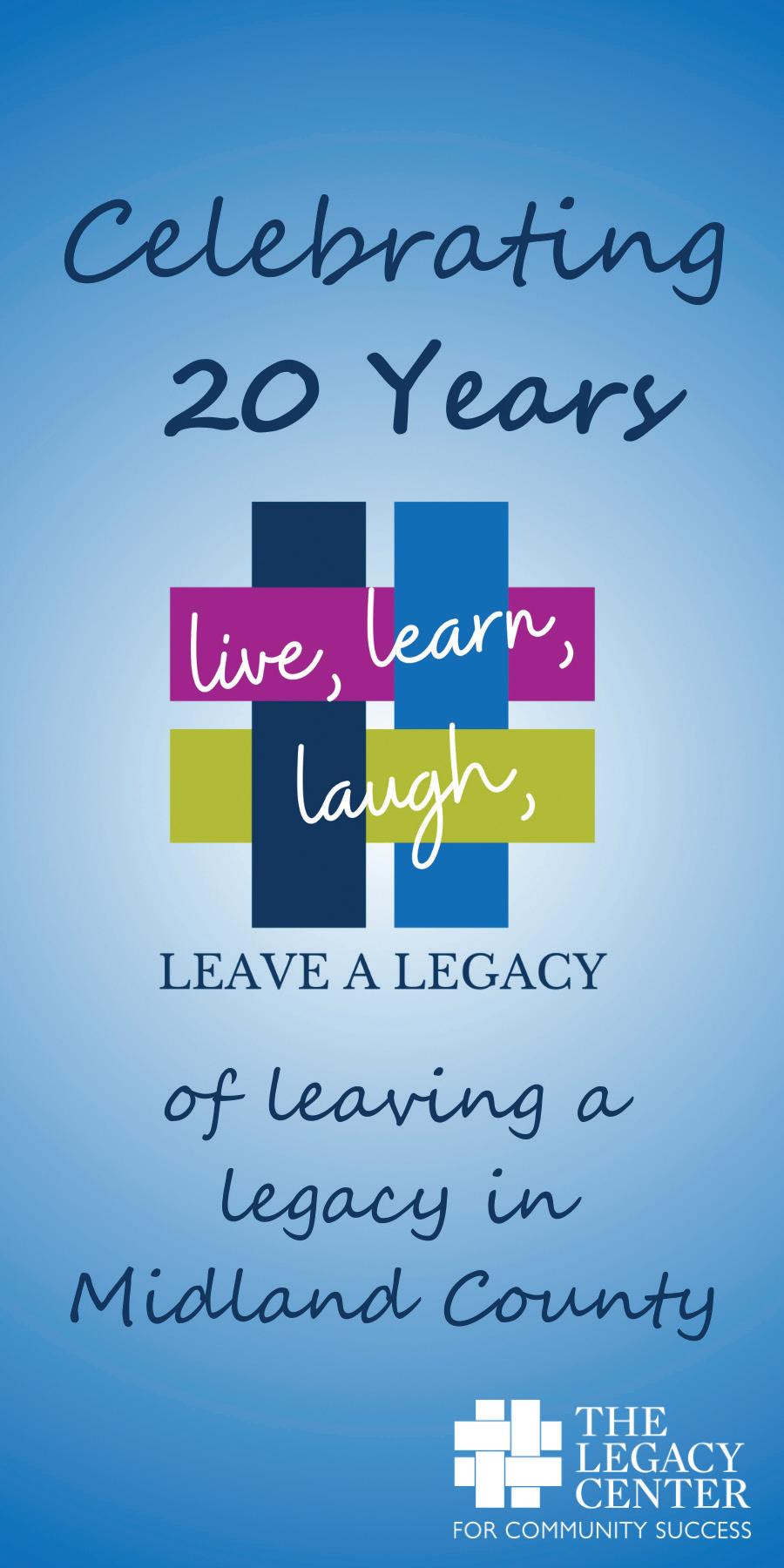

elcome to the March issue!
The magazine committee worked hard to develop a slate of articles to help parents address issues that may surface this time of year. Although kids have been cooped up inside for months, there’s a light at the end of the tunnel where school is concerned, and the days are getting longer—yay!
The committee was also cognizant of it being the time of year for spring break and proms when we see an increase in underage drinking. There is so much research available now, that wasn’t when we were adolescents, about the dangers of alcohol on the developing brain. We’re lucky to have our friends at Natural High share their content that addresses this critically important issue. It is critical that parents set the expectation of no alcohol. The longer we delay their first drink, the better off they will be.
Dr. Tim Elmore does a wonderful job of explaining what dopamine does to the brain in our feature article. We live in a fast-paced world with access to a lot of information affecting us and our kids. A book that further explains this is Dopamine Nation, by Anna Lembke, M.D. She says the smartphone is the modern-day hypodermic needle. It’s a great read!
We are excited to highlight a new writer for the magazine: therapist Meghan Stewart. She shares insight on what cutting is, what to look for, and what parents can do to stop it.
One of our magazine committee members took on the task of writing an article on embracing spring fever. Get those kids outside – and join them! It’s good for everyone’s physical and mental health!
We’re always looking for ideas for articles. If there is a topic you’d like more information on, please send us an email. You can bet someone else has the same burning question!
The Legacy Center changes the trajectory of people’s lives as we help them reach their full potential. We help our neighbors build the reading and language skills they need to succeed. We equip young people to make responsible choices. We are a local collaborative partner committed to increasing the impact of agencies in Midland County.
Follow The Legacy Center www.tlc4cs.org www.facebook.com/tlc4cs
THE LEGACY CENTER FOR COMMUNITY SUCCESS
Kathryn Tate, President/CEO (989) 496-1425 ktate@tlc4cs.org 2417 Abbott Road, Midland, MI 48642
We’re creating an email distribution option. Email tlc4cs@tlc4cs.org and provide your physical address and your email address to switch to electronic delivery.



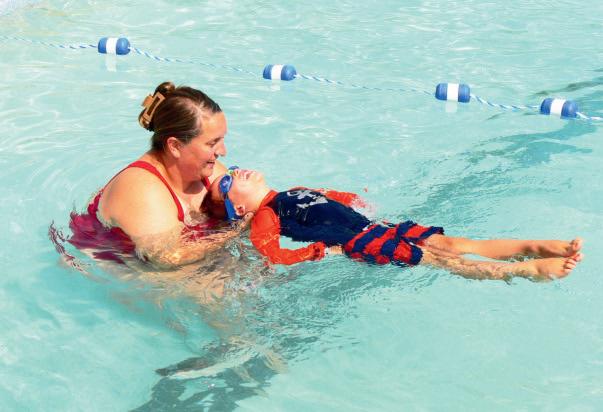
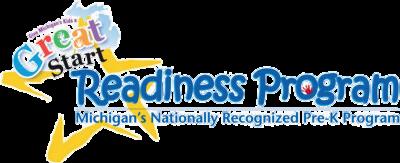

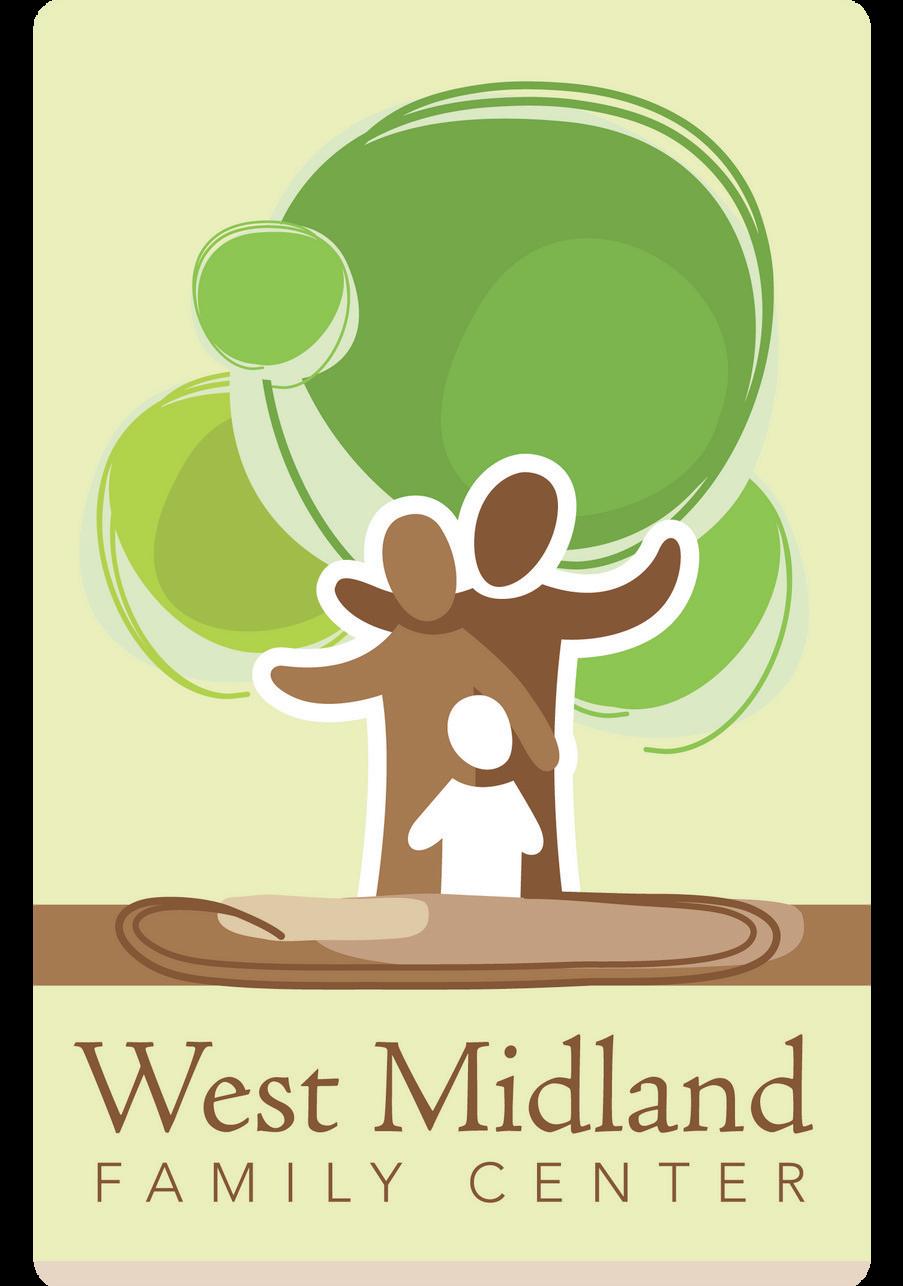

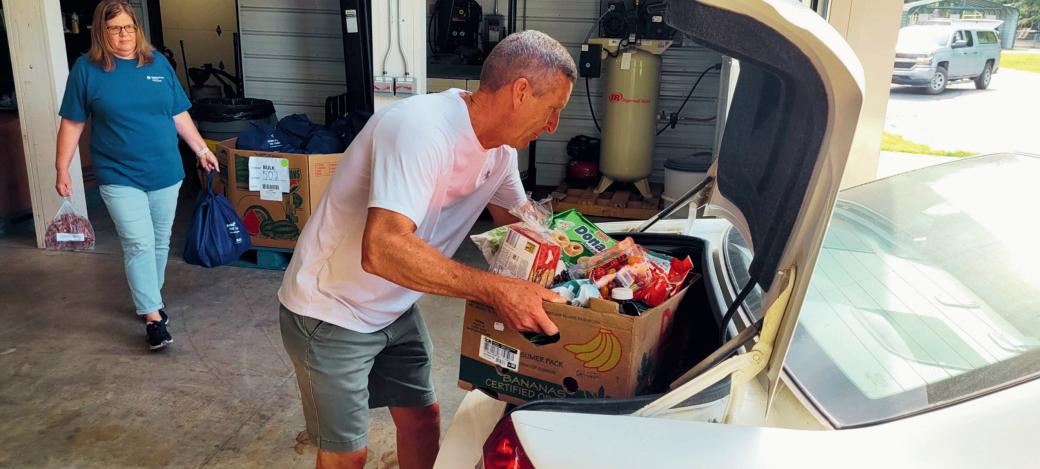
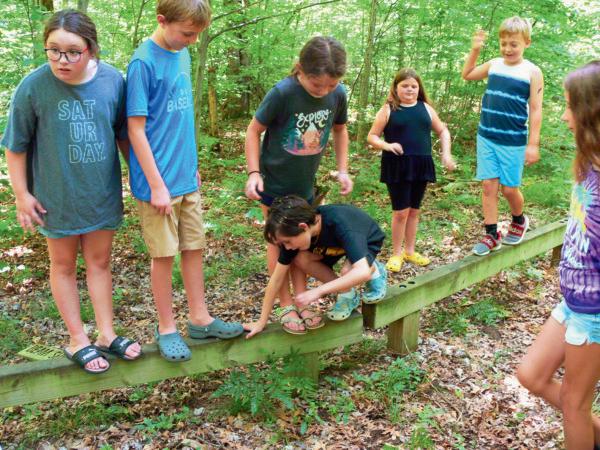




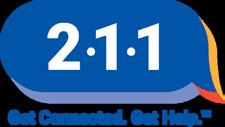



Life is full of challenges. On any given day, there are all kinds of dragons to fight and battles to be won. All these challenges can affect our mental and physical health. How do we find support and care so we can live our happily ever after? It is important to build a strong Network of Care so that you can not only survive but flourish.
People are multi-faceted, and our well-being depends on far more than just our physical health. A Network of Care can include elements like medical providers, doctors, counselors, friends, family, chosen family, church, the workplace, social groups, and many others. It is good practice to have a general practitioner that you see annually for check-ups and other non-emergency issues. But don’t let this important responsibility fall to just whoever happens to have room in their appointment books. I recently had an initial appointment with a new medical provider, and I left her office weeping tears of joy. I had never felt so heard, understood, and validated by a provider in my life. She was kind, knowledgeable, and compassionate. Needless to say, I have officially made her my new doctor and will be going back.
I had a similar experience finding a counselor. I have tried a few, but finally, finding the right one and sharing my emotional baggage with an unbiased professional has changed my life. My wish for you is that you also find a medical provider and counselor that gives you the time and space to communicate your medical and emotional needs.
A Network of Care is more than the right counselor or doctor. Both ancient wisdom and recent research tells us that health is attributed to so much more than good mental and medical care. In 2004 a National Geographic team set out to study areas of the world where people live the longest and are the happiest. One of their key findings is that to stay healthier for longer, it is crucial to have strong social connections. Having social connections can look different for everyone. For some, spending time with family is where it’s at.
Others build a ‘chosen family’ out of close friends who share the same beliefs and values. Some folks turn to their faith community for meaningful connections. If you have a positive rapport at work, you may discover a ‘work family.’ Or maybe it’s the gang you met at game night at the local coffee shop. A strong social group and familial-like connection can be built in many different ways. The important part is that you have people who can laugh with you, cry with you, help care for you when you are sick, and help you move your oversized couch up a flight of stairs. Whoever they are and however you find them, these people not only improve your quality of life but can extend the length of your life.
However, finding our people is not always easy. You may be asking: How do I even start? How do I find a good doctor, a helpful counselor, or a group of friends? It can be difficult to build a Network of Care, and it does take patience. As much as you can, get clear about the kind of person you are and what you value. Aim to build a Network of Care that echoes your values. Author and researcher Brene Brown says, “True belonging does not require us to change who we are. True belonging requires us to be who we are.” Don’t be afraid to walk away from new relationships with doctors, counselors, or friends if you can’t be yourself. Don’t settle for a dismissive doctor because the clinic is only a block away from home. Don’t hang out with untrustworthy people out of loneliness. Don’t change or compromise your beliefs just to fit in to a new church or social community. This is not true belonging. Don’t settle. Instead, branch out and take safe risks, like sitting at a new lunch table, going to a new book group at the library, asking an acquaintance who they see for medical care. Ask around and keep asking. In some ways, building a Network of Care is a lot like dating. As the old saying goes, “You might have to kiss a lot of frogs before you find your prince.”
Once you find your dream doctor, your charming counselor, or your bespoke besties, you are more prepared to fight the hard battles and to live your happily ever after. ■
For many of us the kitchen table represents the typical family experience. We have laughed while having family game night. We have cried over our children’s choices. We have blown out the candles on many cakes. We have argued our way out of doing the dishes. We have struggled through those “three more bites.” We have learned hard lessons and celebrated many deserved successes. One thing is for sure though—if our kitchen tables could talk, there would be plenty of stories! So often it is in relating to others’ stories that we realize there isn’t always one answer, or even a right answer. Parenting is hard work! If you have a story of lessons learned, we invite you to share it with our readers. Sometimes, knowing we aren’t the only ones struggling to find the answer is all the help we need. YOU CAN

When you are depressed, you often feel stuck. People with major depression frequently don’t exercise because their energy and motivation already are low. Just brushing your teeth can feel like a major chore. However, there is hope. Most people do not understand how much they can benefit from a small amount of exercise. If your idea of exercise is going to a gym, jogging down the road, picking up a new sport or restarting an old one, then it is no surprise that exercise seems daunting. It’s not your fault. For most of us, exercise has been defined by advertising. Think of all the gym advertisements, infomercials and images you’ve seen on social media, and you will be demoralized in a heartbeat.
It can be incredibly easy to enjoy the physical and mental health benefits of exercise. Federal guidelines for exercise show how straightforward exercise can be. Walking, dancing, playing and running all count. Moderate-intensity exercise means anything that gets your heart beating faster, and musclestrengthening activity means that you are making your muscles “work harder than usual.” That’s it! Exercise need not be demanding. It does not require a tennis racket, mountain bike or gym membership. Here are the federally recommended amounts of exercise:
Preschool children (age 3-5): These children are to be “physically active throughout the day.”
Children and Adolescents (age 6-17): “60 minutes (1 hour) or more of moderate-tovigorous physical activity daily” that includes:
• Aerobic: 3 days per week
• Muscle and bone strengthening: 3 days per week

Len Lantz, M.D.
Adults: 2.5-5 hours of moderate-intensity or 1.25-2.5 hours of vigorous-intensity aerobic physical activity per week
• Muscle strengthening: two days per week
• Additional health benefits are seen with more than five hours per week of moderate intensity.
Older adults: As part of their weekly physical activity, older adults should do multicomponent physical activity that includes balance training as well as aerobic and muscle-strengthening activities.
There are dozens of research studies showing that exercise exerts a positive effect on major depression, however, the medical community has been slow to embrace exercise as a treatment for depression. One of the
continued on page 9

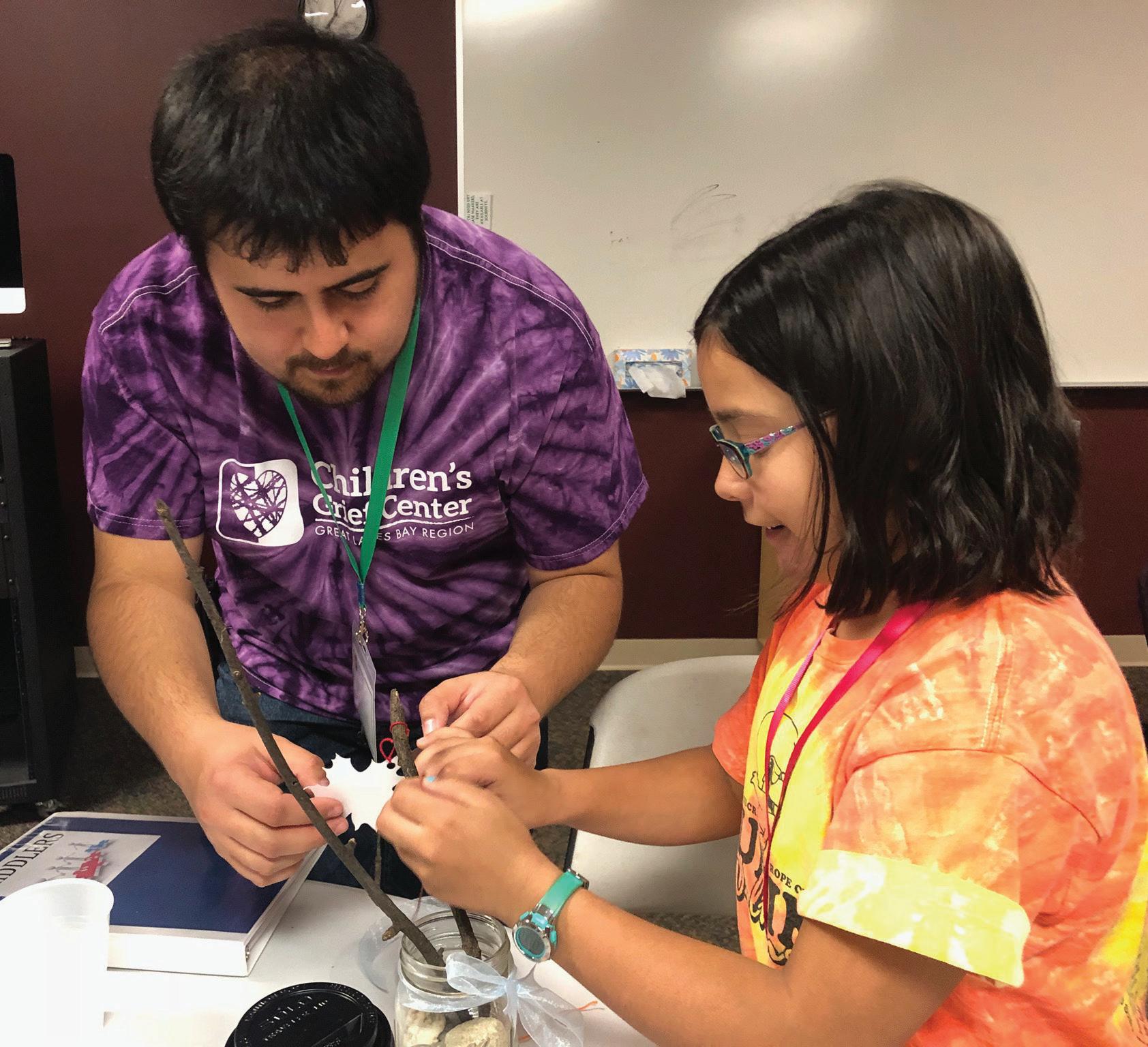



major battles to prove that exercise treats depression was fought and won by lead researcher James A. Blumenthal, Ph.D., at Duke University School of Medicine and his colleagues, many of whom are distinguished researchers at other top universities.
In 1999, the research study, “Effects of exercise training on older patients with major depression,” was published in the Archives of Internal Medicine. The results showed that 16 weeks of exercise produced similar benefit as the antidepressant Zoloft for people with major depression ranging from mild to severe intensity. The people in the exercise arm of the study just needed to walk or jog 3 times per week for 45 minutes for 16 weeks. The study showed that people reached remission (i.e., fully free of depression) 60% of the time in the exercise group, 65.5% of the time in the Zoloft group and 69% percent of the time in the combined group (medication and exercise).
Most of the researchers continued the study for 6 months and they had another amazing finding. If patients from the 1999 study continued to exercise for another 6 months, they were half as likely to relapse back into depression. The benefits of exercise stop when you stop exercising.
Exercise was shown to help depression and the entire field of medicine erupted in celebration, right? Wrong.
These incredible researchers were met with skepticism and denial. The larger medical community could not believe the enormity of their results. Essentially, the medical community said, “Exercise is as good as Zoloft? No way!” They raised objections about how accurate the diagnoses of depression were, how the study was not blinded and that there was no placebo arm in the study.
So, the same lead researcher and his esteemed colleagues put together the more rigorous SMILE study which was published in 2007. The average patient had moderately severe Major Depressive Disorder The exercise was the same (walking or jogging 3 times per week for 45 minutes for 16 weeks) and they compared the exercise group to Zoloft and placebo (sugar pill) groups. The researchers found that the “unadjusted remission rates were: supervised exercise = 45%; home-based exercise = 40%; medication = 47%; and placebo = 31%.”
Did you catch that? The effects of exercise were similar to that of Zoloft. Both exercise and Zoloft beat the placebo. Exercise clearly helps major depression!
A one-year continuation study showed that continuing the treatment for another year resulted in 67% remission in the exercise groups and 63% remission in the Zoloft group. The longer you exercise, the greater the benefit.
Our brain tells us a number of lies to trick us into not exercising. It tells us about a problem we have and then convinces us that if we exercise, the problem will worsen. Our sneaky brain might tell us:
• You are tired enough already
• You already have aches and pains
• You need to rest
• Exercise will make you feel worse
• You will have even less energy after you exercise
• The weather is bad
• You can exercise later
• You exercised yesterday
Here is the reality: most people feel better mid-exercise or postexercise than they do before they started exercising. Try it out for yourself. Assess your energy level pre- and post-exercise. The vast majority of people feel better with exercise. For the small percentage of people who feel mid- and post-exercise worse, here is the cure: back off the intensity of your workout until you feel at least as good as when you started, and then exercise will feel better to you over time as you begin to build your endurance.
“John” was horribly depressed. He was on leave from work because his depression was so severe. He just couldn’t function. He was on an antidepressant and that helped some, but the reality was that he wished he could just sleep for a few weeks, wake up, and find that his depression was gone. Both his therapist and his psychiatrist told him that this was not how it worked. They encouraged him to move his body and fill his day with meaningful activities.
Exercise seemed absolutely impossible to John in his depressed state. When his doctor and therapist encouraged him to exercise, all he could think about was an infomercial and a ripped dude on the machine. John told himself that he would never be able to afford the machine or look like the guy in the ad.
He finally broke down in therapy after his therapist, Joelle, recommended – for the thousandth time – that he start exercising. “I can’t do it!”, John yelled, “I’m too freaking tired and I don’t want to join a gym!” Joelle was stunned but then started smiling. She said, “Thank you for bringing this up to me. I’m sorry I didn’t explain what I meant by exercise. I just wanted you to walk a few laps around the town square. That’s it. You don’t have to pump iron and look like Dwayne ‘The Rock’ Johnson. Let’s talk about realistic exercise that will actually charge up your batteries.”
John and Joelle came up with a plan that he liked. He would wake up by 7 am, take three laps around the town square (he would take four laps if he was feeling really good after the third) and then he would take care of his hygiene and eat a healthy breakfast. John felt better and better each week. He continued to meet with his psychiatrist and take his antidepressant. Within a few months, he started to notice that his depression was going away, and he was starting to enjoy life again.
It is easy to start exercising today. Pick an activity that increases your heart rate and do that regularly each week until you are exercising for at least 2 1/2 hours per week. Here is a reasonable strategy:
• Check with your doctor first if you have a health condition
• Start slow and build your stamina (you don’t need to overdo it)
+ Start walking every morning before breakfast
+ After lunch go for a brief walk
+ Avoid exercising near bedtime, as this can disrupt your sleep and digestion
• Buy a Fitbit or keep a paper Exercise Log
+ Keep track of your energy and how you feel pre- and post-exercise
+ Monitor your mood
+ Record the days and amount of time you exercised
+ List the type of exercise
• Write down your plan for bad weather days
• List your top excuses for not exercising and your replies to your tricky brain
If you are willing to make changes in your life to increase your exercise, you are likely to become less depressed. Even if you do not have depression, exercise is good for your emotional well-being and physical health. Think about how satisfying it would feel at the end of the day to know that your exercise has helped your body and your brain. Taking care of yourself through regular, moderate exercise is a proven strategy for helping your depression and enhancing your mental and physical health. You can do it today and you can do it for free! ■
Check out who’s standing out in our community.
Please email jblewett@tlc4cs.org and tell us why this individual has stood out in your crowd.
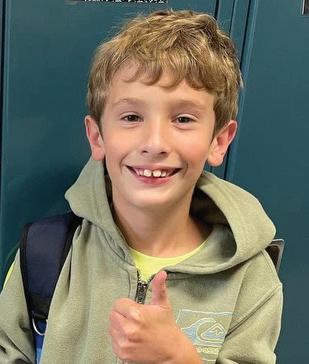
Lincoln earned Mustang Role Model for the Month in September! He is always a kind and caring student who is always looking out for his classmates. His perseverance is inspiring, as he tackles challenging tasks with determination and never gives up. He is respectful of his teachers and peers and is quick to lend a helping hand to anyone who needs it. Lincoln is a role model to others with his heart of gold and resilient spirit!
Claire is in 7th grade at Jefferson Middle School and is passionate about helping in her community. When she grows up, Claire hopes to work with elderly folks as an Activities Director for a program like The Rock but in nursing homes. Claire says, “Everyone deserves to have fun. It helps people keep going; that’s the most important thing, you know. Keep on going and keep trying! You got this!”


Zek would describe himself as “a very artistic kid”. Others would agree and add that he’s kind and patient. He’s part of the Electronics Club through Northeast Middle School and regularly attends The ROCK OST program. Zek dreams of creating the best cartoon ever and spends time drawing and creating characters out of Perler beads. Zek likes going to the ROCK because he gets free paper and learns about different people and their experiences to create realistic characters that people can relate to. He can communicate his boundaries while remaining calm and kind, a skill people older than him still haven’t mastered.
Haley is the College Opportunity Program (COP) Director at West Midland Family Center. COP is a long-term mentorship program preparing students for life after graduation. Haley is incredibly dedicated to her work. She has labored to cultivate an encouraging and inclusive environment for all students. When asked about their experience, students describe COP as their “home away from home” and “safe space.” Haley meets each student where they are and constantly adjusts the program to support them. Beyond building their developmental assets and providing growth opportunities, Haley exudes joy. She is welcoming, accepting, and caring in everything she does. Haley is a fantastic asset to her organization and these teens’ lives. Her organization is very proud of the impact she makes.
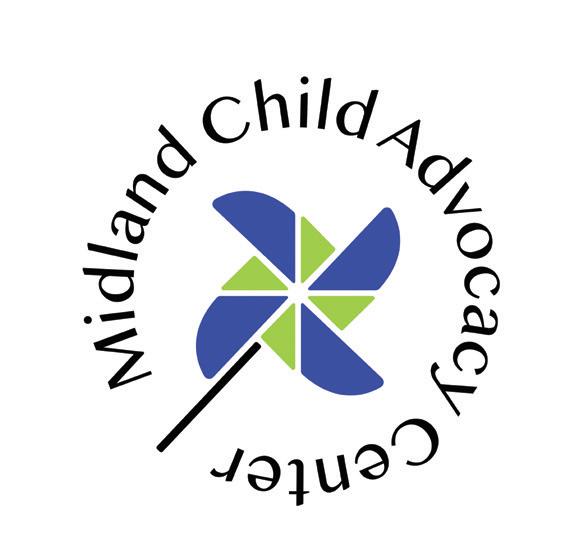

Safe and Sound Child Advocacy Center is now Midland Child Advocacy Center. At MCAC, they promise to empower children and families through compassionate, trauma-informed care. As Midland County’s only accredited child advocacy center, they are dedicated to preventing abuse. They collaborate with community partners to ensure every child is heard, every family is supported, and every caregiver is equipped with resources to protect children from abuse and neglect. Their commitment to best practices and ongoing training means they are here when children and families need them most. They provide forensic interviews, family advocacy, car seat safety, safe sleep education, body safety education, and child abuse prevention training. For more information, please visit www.midlandcac.org.

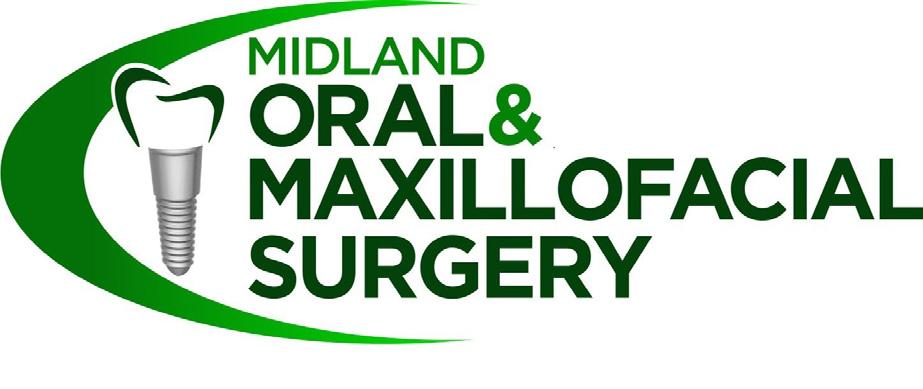
40 Developmental Assets are essential qualities of life that help young people thrive, do well in school, and avoid risky behavior.
Youth Connections utilizes the 40 Developmental Assets Framework to guide the work we do in promoting positive youth development. The 40 Assets model was developed by the Minneapolis-based Search Institute based on extensive research. Just as we are coached to diversify our financial assets so that all our eggs are not in one basket, the strength that the 40 Assets model can build in our youth comes through diversity. In a nutshell, the more of the 40 Assets youth possess, the more likely they are to exhibit positive behaviors and attitudes (such as good health and school success) and the less likely they are to exhibit risky behaviors (such as drug use and promiscuity). It’s that simple: if we want to empower and protect our children, building the 40 Assets in our youth is a great way to start.
Look over the list of Assets on the following page and think about what Assets may be lacking in our community and what Assets you can help build in our young people. Do what you can do with the knowledge that even through helping build one asset in one child, you are increasing the chances that child will grow up safe and successful. Through our combined efforts, we will continue to be a place where Great Kids Make Great Communities.
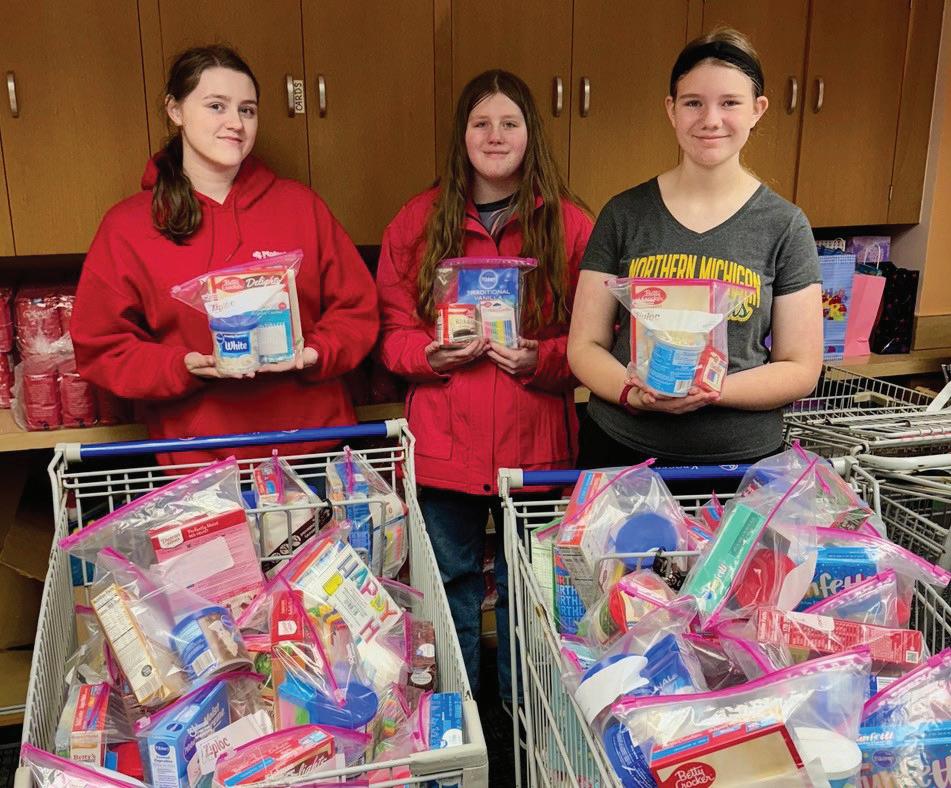



1. Family support: Family life provides high levels of love and support.
2. Positive family communication: Young person and her or his parent(s) communicate positively, and young person is willing to seek advice and counsel from parent(s).
3. Other adult relationships: Young person receives support from three or more nonparent adults.
4. Caring neighborhood: Young person experiences caring neighbors.
5. Caring school climate: School provides a caring, encouraging environment.
6. Parent involvement in school: Parent(s) are actively involved in helping young person succeed in school.
7. Community values youth: Young person perceives that adults in the community value youth.
8. Youth as resources: Young people are given useful roles in the community.
9. Service to others: Young person serves in the community one hour or more per week.
10. Safety: Young person feels safe at home, at school, and in the neighborhood.
11. Family boundaries: Family has clear rules and consequences and monitors the young person’s whereabouts.
12. School boundaries: School provides clear rules and consequences.
13. Neighborhood boundaries: Neighbors take responsibility for monitoring young people’s behavior.
14. Adult role models: Parent(s) and other adults model positive, responsible behavior.
15. Positive peer influence: Young person’s best friends model responsible behavior.
16. High expectations: Both parent(s) and teachers encourage the young person to do well.
17. Creative activities: Young person spends three or more hours per week in lessons or practice in music, theater, or other arts.
18. Youth programs: Young person spends three or more hours per week in sports, clubs, or organizations at school and/or in the community.
19. Religious community: Young person spends one or more hours per week in activities in a religious institution.
20. Time at home: Young person is out with friends “with nothing special to do” two or fewer nights per week.
If you or your child would like to submit a picture that represents one of the 40 Developmental Assets, please email jblewett@tlc4cs.org with a picture and the number of the asset the picture represents.
21. Achievement motivation: Young person is motivated to do well in school.
22. School engagement: Young person is actively engaged in learning.
23. Homework: Young person reports doing at least one hour of homework every school day.
24. Bonding to school: Young person cares about her or his school.
25. Reading for pleasure: Young person reads for pleasure three or more hours per week.
26. Caring: Young person places high value on helping other people.
27. Equality and social justice: Young person places high value on promoting equality and reducing hunger and poverty.
28. Integrity: Young person acts on convictions and stands up for her or his beliefs.
29. Honesty: Young person “tells the truth even when it is not easy.”
30. Responsibility: Young person accepts and takes personal responsibility.
31. Restraint: Young person believes it is important not to be sexually active or to use alcohol or other drugs.
32. Planning and decision making: Young person knows how to plan ahead and make choices.
33. Interpersonal competence: Young person has empathy, sensitivity, and friendship skills.
34. Cultural competence: Young person has knowledge of and comfort with people of different cultural/racial/ethnic backgrounds.
35. Resistance skills: Young person can resist negative peer pressure and dangerous situations.
36. Peaceful conflict resolution: Young person seeks to resolve conflict nonviolently.
37. Personal power: Young person feels he or she has control over “things that happen to me.”
38. Self-esteem: Young person reports having a high self-esteem.
39. Sense of purpose: Young person reports that “my life has a purpose.”
40. Positive view of personal future: Young person is optimistic about her or his personal future.
Not

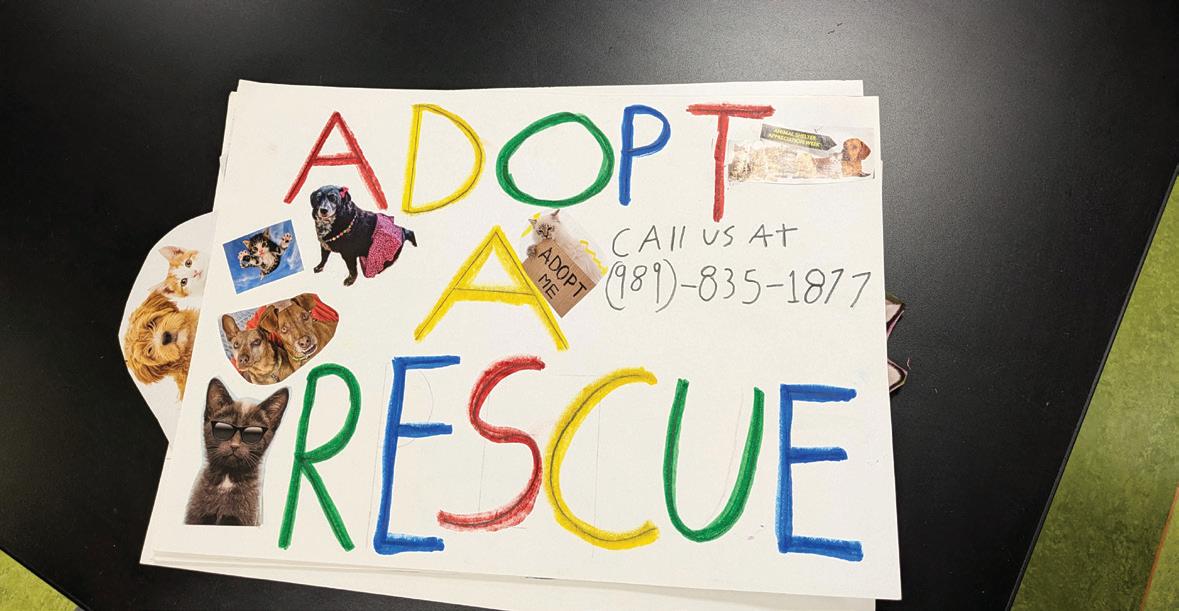



By KELLY KANDER, LCPC
Spring is in the air, the sun is shining, the days are getting longer, and the thoughts of young brains everywhere seem to have drifted out the window, far away from any classroom. Spring fever has set in leaving parents and teachers pulling out their hair to figure out how to engage those checked- out minds. Crossing the finish line of this race seems impossible, but with some plans in place, not only can it be done, but it can also be enjoyed with great fun and enthusiasm!
It is easy to allow spring fever to sneak up and pounce when the parental guard is down, leaving parents without a plan and without time to give much thought action. This, of course, creates a defensive parental posture which will typically lead to giving up or becoming the dreadful drill sergeant who is all work and no play. In preparation for this time, communication is especially important. Ask what each child loves the most as the season changes, taking time to listen closely to the answers. Transition to allowing each child to consider his/her struggles that prevent a strong finish to school, activities, and home contributions. It may be surprising that children differ in their struggles so parents should not try to slap on a one- size fits-all solution to the spring fever dilemma.
First, as with most times of transition, consistency is an important key for everyone involved. Remembering that all children, including teens, need healthy adult supervision is essential to standing firm with a loving attitude. Sleeping and eating well are included in basic consistency throughout the lifespan. A minimum of eight hours or consistent and quality sleep helps the brain and body to reset, restore, and recall most efficiently. Also keep in mind that with sleep comes the discipline of turning off technology (TV, computer, and phone screens) at least 90 minutes before lights out. The light from these devices mimics sunlight causing a delay in necessary restorative sleep cycles. Secondly, take a step on the wild side and mix up the routine a little. Notice, this is not a contradiction to consistency but allows for
Not warm enough for a picnic? Have one in the living room – complete with a blanket and paper plates.
Plant some seeds in starter pots that can be planted in the garden when it warms up.
Get rid of old, tired school supplies. Buy new springcolored pencils, erasers, notebooks. School is more fun with new things.
Develop a calendar with holidays and events that kids can look forward to and visualize that they’re in the home stretch.
Leave notes on mirrors telling kids how great they are and encouraging them to finish strong.
some creative flexibility in accomplishing daily tasks. For instance, indulge in the great outdoors that are calling by moving homework time a little later in the day, or move homework time outside to embrace the benefits of fresh air and sunshine. Include a healthy amount of social time with friends so that the rewards of spring are not forsaken but instead are embraced. Robbing free time can worsen spring fever symptoms as
children long for some control in their lives and their schedules. Include activities that are limited by winter and more enjoyable as the weather warms up like bike rides, hikes, frisbee, and leisurely walks. Have fun, enjoy, and indulge a little!
Finally, keeping in mind “The Big Picture” allows for peace of mind and perspective on spring fever. This is where some fun goal setting and incentive planning can come into play in a way that is not reduced to destructive bribery. Ask kids how they want to finish school strong. Help them set specific, measurable goals to encourage them through this time. It is the child’s ownership in goal setting that gives it proper motivation. In addition to setting the goals, allow kids to create their own incentives as well. This does not equate to big ticket items, money, and grandiose trips. Make a weekend plan for some added fun, give them a foot rub on Friday night for reaching all the deadlines of the week, plan a special dinner for passing the exam s/he studied so hard to pass. Involve the kids to creatively establish meaningful incentives to acknowledge little goals made along the way. However, choose the wording carefully because incentives can easily turn into bribes. For a kid who has decided that 30-60 extra minutes of video games for the weekend would be the incentive of choice, use “I think indulging extra video game time sounds like a reasonable reward for your hard work this week. I know you can do it!” This statement is much different than a parent saying, “If you turn in all your assignments this week, you can have 30 extra minutes of gaming on Friday.”Remember, little accomplishments along the way can be celebrated as long as they are reasonably proportionate to the goals. Furthermore, not all goals need an incentive. Again, we are celebrating hard work, dedication and perseverance, not every action of the child.
After communicating and planning with active participation from the kids, a proper plan can be created to fully enjoy all that spring brings. Spring fever will not necessarily go away, but it will be embraced in a new and refreshing way! ■
By NATURAL HIGH STAFF
ost kids grow up and never see drug use personally. Sure, they hear references on TV and movies, they might even hear about relatives or neighbors who’ve abused drugs, but mostly it’s something that happens ‘out there’.
Alcohol consumption is quite different. Most kids grow up seeing adult role models who drink, so how do we help them navigate healthy choices when they get mixed messages?
Teens are more prone to engaging in risky behaviors. Their brains aren’t fully developed, they have a unique thirst for dopamine, and they crave acceptance from their peers. To make it even worse, alcohol is easily the most accessible substance — way more than illicit drugs. And it is socially acceptable for adults to drink; it’s a normalized behavior.
A common view is that youth drinking is the norm, but most young people actually do not drink. Research shows that young people tend to overestimate how much their peers drink. This increases the risk that they will drink to ‘be normal’ or be like their peers. When their desire to fit in overrides their caution or personal values, they can make life-altering decisions with substances without realizing what they’re doing. We can intervene and educate them so they’re able to understand and make wiser choices.
• Kids who delay their first drink of alcohol as long as possible will have an infinitely higher likelihood of avoiding a lifelong struggle with alcohol.
• Using drugs and alcohol at an early age has been associated with multiple problems later in life such as negative health, social, and behavioral outcomes.
• Research has found that over 40% of all individuals who reported drinking alcohol before the age of 15 became alcohol dependent at 4x the rate of those who first reported drinking at ages 20+.
• First use of alcohol at ages 11–14 greatly heightens the risk of progression to the development of alcohol disorders.
• 90% of addictions start in adolescence.
Numerous studies have shown that kids whose parents let them drink before they reach the legal age of 21 are more likely to drink in riskier ways and experience future alcohol-related problems than kids whose parents do not permit any underage drinking.
• Alcohol affects the parts of the brain responsible for self-control. Given their inclination for risky behavior, alcohol consumption increases the likelihood of making poor decisions and unhealthy choices, including risky sexual behavior and suicide.
• Motor vehicle crashes are a leading cause of death among young people. 22% of teen drivers involved in fatal crashes in 2022 had a blood alcohol content of at least .08%.
Set the expectation with your child that there will be no alcohol use. Some parents or caregivers believe that it is better to teach their children to drink responsibly or in moderation than to have clear rules against underage drinking. Some feel that, as long as their child doesn’t drink and drive, some alcohol use before the age of 21 is to be expected and is not a big deal.
Beliefs like these are not supported by a growing body of research. Evidence increasingly points to the specific harms of any alcohol use prior to adulthood. Numerous studies have shown that kids whose parents let them drink before they reach the legal age of 21 are more likely to drink in riskier ways and experience future alcohol-related problems than kids whose parents do not permit any underage drinking.
The dangers of alcohol use are clear and need to be discussed with our kids. How and
when do we discuss the dangers of underage drinking? Probably more often than you think!
Years of prevention research have proven that kids who have an ongoing series of discussions with their parents, especially during the middle school years, have the strongest likelihood of making wise choices regarding substances for the rest of their lives. Too often, though, this goes overlooked. Parents get busy. Kids pull away, etc.
Most parents aren’t aware that the more you initiate and engage your kids in thoughtful discussions about the dangers of harmful substances, the better off they will be.
Even better are a series of ongoing discussions over the years. But there’s one important caveat to these important interactions — they need to be interactions. No lectures or monologues — they have to be dialogues and conversations. Text messages don’t count, and neither do notes in their lunch bag.
It’s critical to help your kids manage the dangerous scenarios they’ll likely find themselves in by helping them have clear boundaries and expectations. As much as teens grate against the rules, restrictions, and boundaries adults set for them — they still need them. They aren’t wise enough (yet) to make the best choices for themselves. They lack the context, life experience, and ability to see how their current choices will affect them in the future.
Adolescence is such a critical phase in brain development that the actions of alcohol and other drugs on the brain have a particularly profound impact during this developmental period. Youth need guidance and especially through boundaries and guardrails we set for them. That’s our responsibility. We need to continue operating as their brake as they push down the gas pedal.
Even though they roll their eyes and argue at every turn, they know deep down that the restrictions we set for them express our love and concern for them. Kids who have adults in their lives who give them too much freedom too early often develop a deep-seated belief that they aren’t valuable or worthy, and they carry that fundamental belief with them into adulthood. ■

We are so busy, I feel like I’m missing out on my kids’ lives. What can I do to make my time with them more intentional, and when?
Often, family time is reduced to eating chicken nuggets in the car on the way to practice or music lessons. It’s hard to get in time for meaningful conversation and connection to our kids. That’s when we need to stop and not prioritize our schedule, but schedule our priorities. The easiest way is to take advantage of opportunities that already naturally occur in our days. Four times might be:
• MEALTIME • BEDTIME
• MORNING TIME • DRIVE TIME
These are often wasted occasions that can be used to engage in conversation. Each “junction” can serve a function. Mealtimes can be used to play the role of teacher. Ask your kids about their day, debrief what happened, and help them make sense of it. Morning time is the perfect time to play cheerleader. Encourage them to have a good day and have them make a point to serve others. Bedtime is a great time to put on your counselor hat. Kids tend to be more vulnerable at bedtime. Lasty, drive time you can serve as their friend. Listen to what the song lyrics mean and discuss how they should or should not shape our world.
Obviously, these times are going to require everyone to be off their technology; parents included. Here are some prompts to get conversations started:
Mealtime – What’s the best thing that happened today? How about the worst? What did you learn?
Morning time – Find one person you can help or encourage today. Let me know what happens tonight.
Bedtime – Did anyone hurt your feelings today? Did you hurt anyone else’s? What opportunities did you have to help someone?
Drive time – What’s your favorite song and why? What’s your favorite part about school right now? What would make it better?
After you’ve used all the prompts, use the role for each junction to generate other ideas. Does cheerleading need to look different one day than the other? How about being a friend?
Not only will these conversations help build rapport with your children, but they’ll also start to look forward to having your undivided attention and interest in their lives. It’s a great investment in time.
HAVE A QUESTION?
jblewett@tlc4cs.org
We cannot guarantee all questions will be published; however, we will do our best to respond to all questions submitted.

2
The number of fears we’re born with: falling and loud sounds
221,800
The number of islands in Sweden, the most of any country


63
The number of football fields the length of the longest bridal veil was
1,850
The number of chocolate bars used in the movie Charlie and the Chocolate Factory

6
million
7

The number of neck vertebrae a giraffe has
The number of parts in a 747 airliner

TDV is intimate partner violence that occurs in adolescent relationships and can include physical or sexual violence, psychological aggression, or stalking
This abuse can take place face-to-face or electronically, such as through texts, video calls, social media, etc
Excessive jealousy or insecurity
Explosive temper or unwarranted bouts of anger
Controlling or monitoring where you go, who you ’ re with, or who you talk to
Bullying, name-calling, or intentional humiliation
Consistently accusing you or blaming you for things
Vandalizing your property or threatening/causing physical violence
Pressuring for unwanted sexual activity or favors (inperson or electronically)

You are not alone
Call: 877-216-6383
Text 989-200-5122
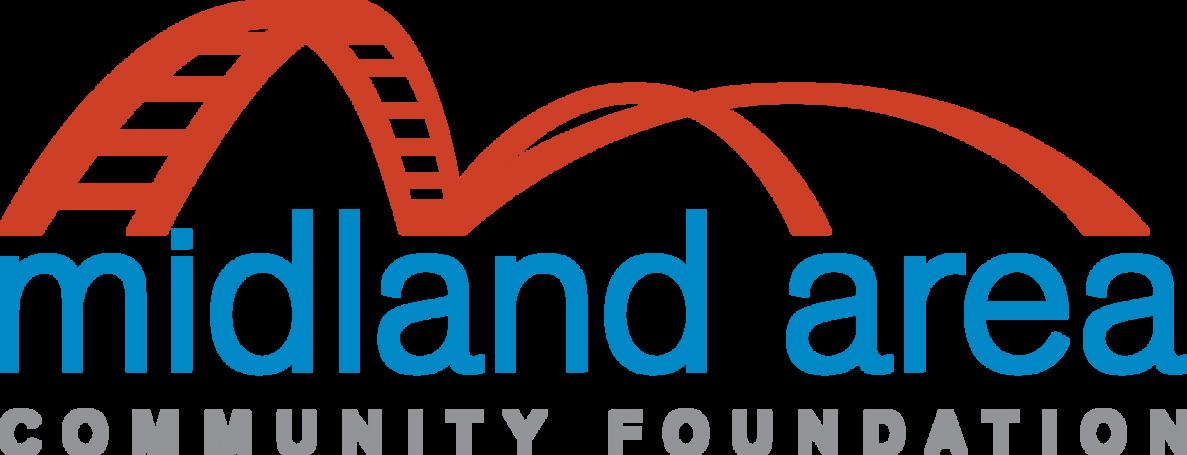
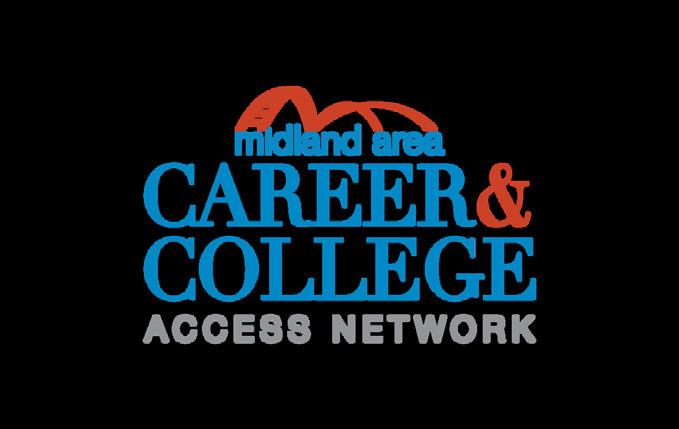
The Midland Area Career & College Access Network is a learner-centered, communityminded network united in facilitating equitable postsecondary education access and attainment in and around Midland County

With over $500,000 in scholarships awarded annually and system-based initiatives that enhance the lives of youth in Midland County, the Midland Area Community Foundation is committed to developing talent locally to move toward our community‘s goal of becoming an inclusive and exceptional place where everyone thrives. Visit MidlandFDN.org to learn more!
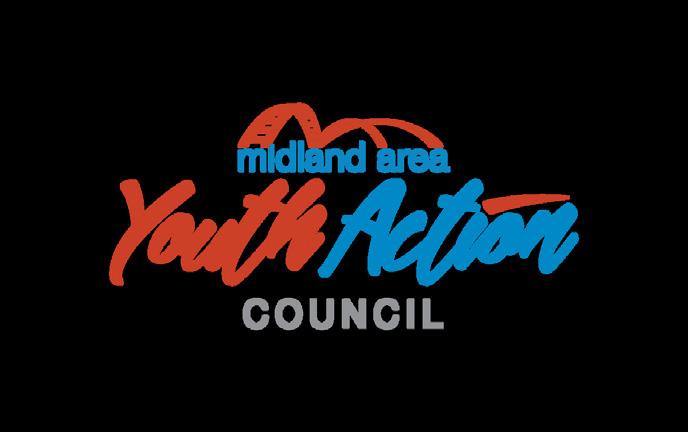
The Midland Area Youth Action Council provides middle & high school students with the opportunity to learn how to be effective philanthropists by making grants to local nonprofit organizations that benefit youth in the Midland area.
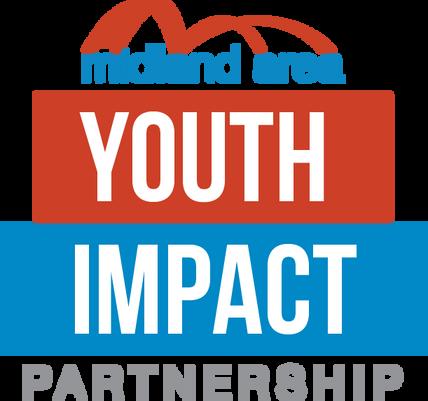
The Midland Area Youth Impact Partnership’s mission is to promote the safety and wellbeing of all Midland County citizens by building empathy and kindness amongst youth, through awareness, education, and collaboration

Teens face challenges that can feel overwhelming. Emotional struggles, pressure to fit in, and unresolved pain can take a toll. When mental health problems go unaddressed, they can lead to dangerous consequences. Many teens look for ways to cope, and some turn to drugs or alcohol. Ignoring mental health in teens doesn’t just affect their present. It can set the stage for lifelong struggles, including addiction. By understanding this connection, we can take steps to prevent it and support teens before it’s too late.
Teens experience a wide range of emotional struggles that can affect their mental health and well-being. These challenges often go unnoticed or misunderstood, leaving teens feeling isolated. Here are some of the most common struggles they face:
• Anxiety about the future: Many teens worry about academic performance, college admissions, and career choices. These pressures can feel overwhelming without proper support.
• Depression and loneliness: Feelings of sadness or hopelessness often stem from challenges at school, at home, or in social situations. These emotions can spiral if left unchecked.
• Social media pressure: Constant exposure to curated lives on social media platforms can make teens feel inadequate. They may compare themselves to others, leading to low self-esteem.
• Bullying and peer rejection: A study published in the Journal of the American Medical Association found that individuals who experienced bullying during childhood faced increased risks of mental health issues in adulthood, including anxiety, depression, and low self-esteem. Also, repeated rejection by peers damages confidence and makes teens withdraw.
• Trauma from past experiences: Events such as family conflicts, abuse, or witnessing violence leave a lasting impact. These experiences shape how teens cope with stress and emotional pain.
• Family problems: Conflicts at home,
divorce, or neglect can make teens feel unsupported. That often worsens feelings of anxiety and sadness.
• Pressure to fit in: Teens often need to conform to peer expectations. This desire to fit in can push them into unhealthy behaviors, including experimenting with drugs or alcohol.
When mental health in teens goes ignored, the consequences don’t just disappear—they grow. Teens who don’t receive help often develop unhealthy ways to cope, such as using drugs or alcohol to numb their feelings. That can damage their relationships with family and friends, creating more isolation and frustration.
Neglected mental health also affects academic performance, making it harder for teens to focus, keep up with schoolwork, or achieve their goals. Over time, untreated issues can lead to deeper emotional pain, which increases the risk of depression, anxiety, and addiction.
The longer these struggles remain unaddressed, the harder they become to untangle, affecting a teen’s future relationships, career prospects, and overall quality of life. Ignoring mental health in teens doesn’t just affect one aspect of their lives—it sets off a chain reaction of challenges that can follow them into adulthood.
Teens often turn to substances when they feel overwhelmed and lack proper support. Some experiment with drugs or alcohol out of curiosity or because of peer pressure. Others use substances to escape feelings of stress, loneliness, or failure. Sometimes, teens believe substances will help them fit in or feel more confident in social situations. However, deeper reasons often lie beneath these behaviors. For many, unresolved pain from childhood trauma plays a significant role. Traumatic events during formative years can trigger long-term changes in the brain’s structure and function, making it harder to regulate emotions or manage stress.
This connection between childhood trauma and substance misuse highlights how deeply past experiences can influence
present decisions. The cumulative effect of multiple traumatic experiences significantly increases the risk of substance dependence. Without proper awareness and support, teens may see substances as the only way to escape their pain.
Providing a safe environment, open communication, and access to mental health resources can prevent these struggles from escalating. Early intervention makes a meaningful difference in breaking this cycle and helping teens find healthier coping methods.
Breaking the stigma around teen mental health is one of the most effective ways to help them feel safe seeking support. Misunderstandings and shame often keep teens from talking about their struggles but building awareness can change this. Here are some practical steps to break the stigma:
• Talk openly about mental health: Normalize conversations about mental health at home, school, and in the community. That helps teens see it as a normal part of life, not something to hide.
• Educate yourself and others: Learn about common mental health issues in teens and how to recognize the signs. Share this knowledge with friends, family, and colleagues to spread awareness.
• Be a role model for understanding: Show empathy and avoid judging teens who share their feelings. Being approachable and supportive will encourage them to open up without fear of being labeled.
• Encourage teens to seek help early: Promote asking for help as a strength, not a weakness. Offer guidance on finding counselors, therapists, or hotlines if needed.
Ignoring mental health in teens can have lasting consequences, including addiction. Recognizing their struggles and providing support on time can make a huge difference. By addressing issues like trauma, emotional pain, and stigma, we can help teens find healthier ways to cope. ■



Sunday Worship
9 & 10:45 a.m. in-Person & Live Stream
Sunday Youth Groups
12-2 p.m. Middle School
5-7 p.m. High School
Music & Choirs
Bells & Chimes, voice, & Praise Band
Wednesday Lighthouse
Bible Study & Discussions
Retreats, Service Projects, Mission Trips, & more


1-1 Tutoring Grades 2-8
Build skills and confidence
Visit tlc4cs.org/ learn
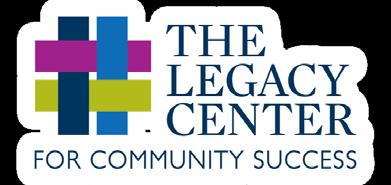
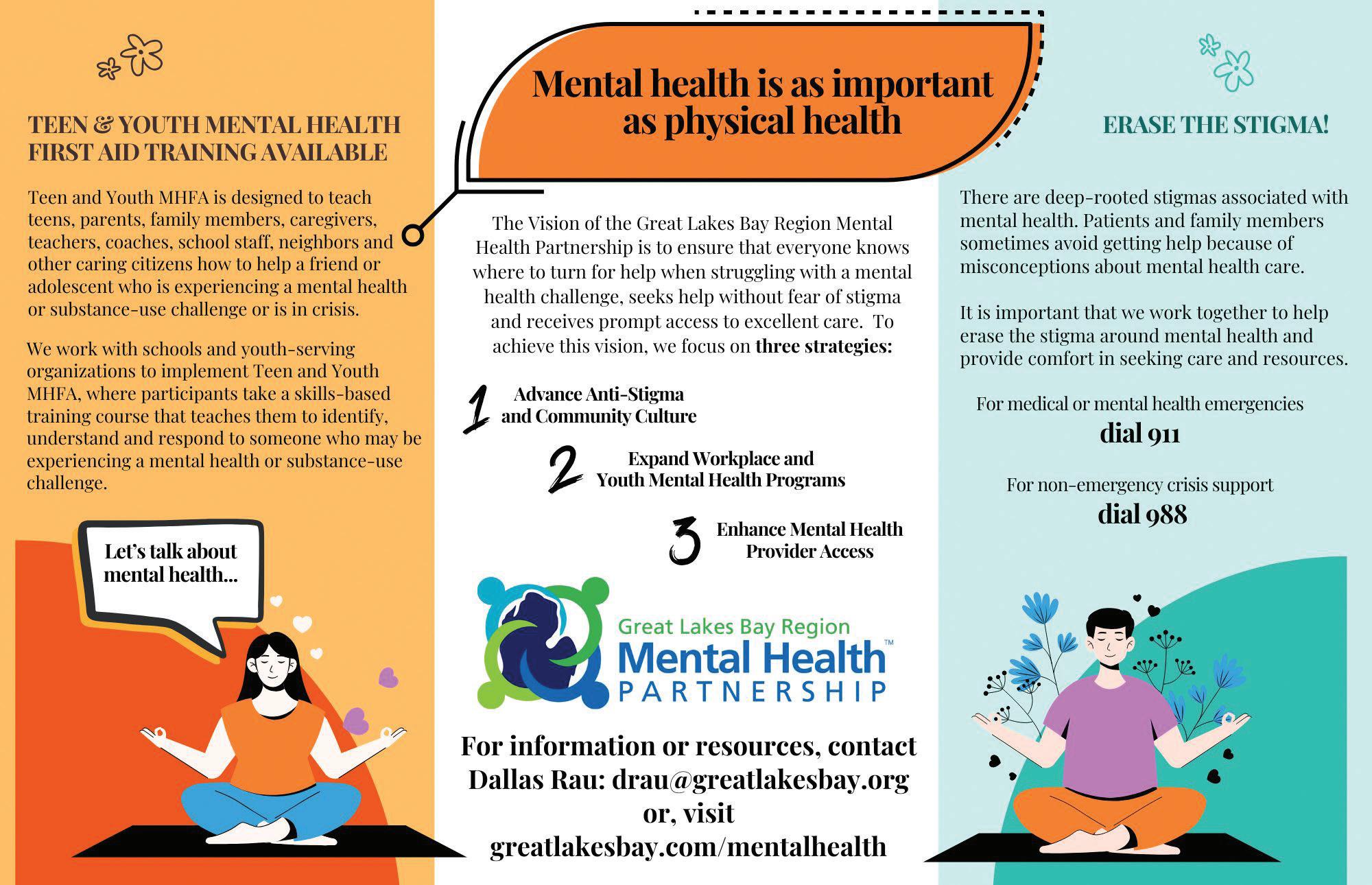

By MEGHAN STEWART, M.S., LCPC

The act of cutting to make one feel better may seem contradictory. This is why cutting has become widely known and easily accessible for adolescents. As a parent, you may have heard about cutting but what are the red flags and what can you do?
The term cutting can be described as intentionally causing harm to oneself through the use of sharp objects which create scratches, marks, or cuts. This can include items like razor blades, scissors, broken items such as mirrors or plastic pieces (think broken make-up compacts or disassembled pens) or even scratching with fingernails to cause harm. You may think about scratches or marks across the inside of someone’s arms, which is common, but cutting can occur anywhere on the body.
According to the American Psychological Association about 17% of adolescents have engaged in non-life-threatening or self-harming behaviors at least once. Those that do engage in self-harming behaviors like cutting have a higher risk of experiencing depression, hopelessness, and lower self-esteem than those of their peers who do not engage in cutting.
What can you do as a parent? In short, be as non-judgmental and supportive as possible. Talk with your adolescent to understand but not to criticize or place blame. Work together to identify triggers for their cutting. This can include people, settings, or memories. Through my work I have also seen adolescents identify certain book series that become triggering which increased their cutting. Their triggers are going to be unique to them so don’t discount their concerns because it doesn’t make sense to you. Supporting them in healthy coping skills such as going for a drive or walk, playing with a pet, listening to music, or drawing can be alternative ways to cope. A healthy coping skill is going to be something that makes them feel safe and calm.
Other interventions that help harm minimizations include allowing them to wear a rubber band to snap on their wrist, pinching themselves, or drawing or painting on their skin. Providing controls for your adolescent may help them feel more willing to share and open up to you, which is the goal. As always, seek professional help when needed. Primary care providers, mental health professionals and school counselors are great resources, and they can guide you to next steps. ■
We thank our
Your commitment is changing lives! tutors thrive! who help our learners
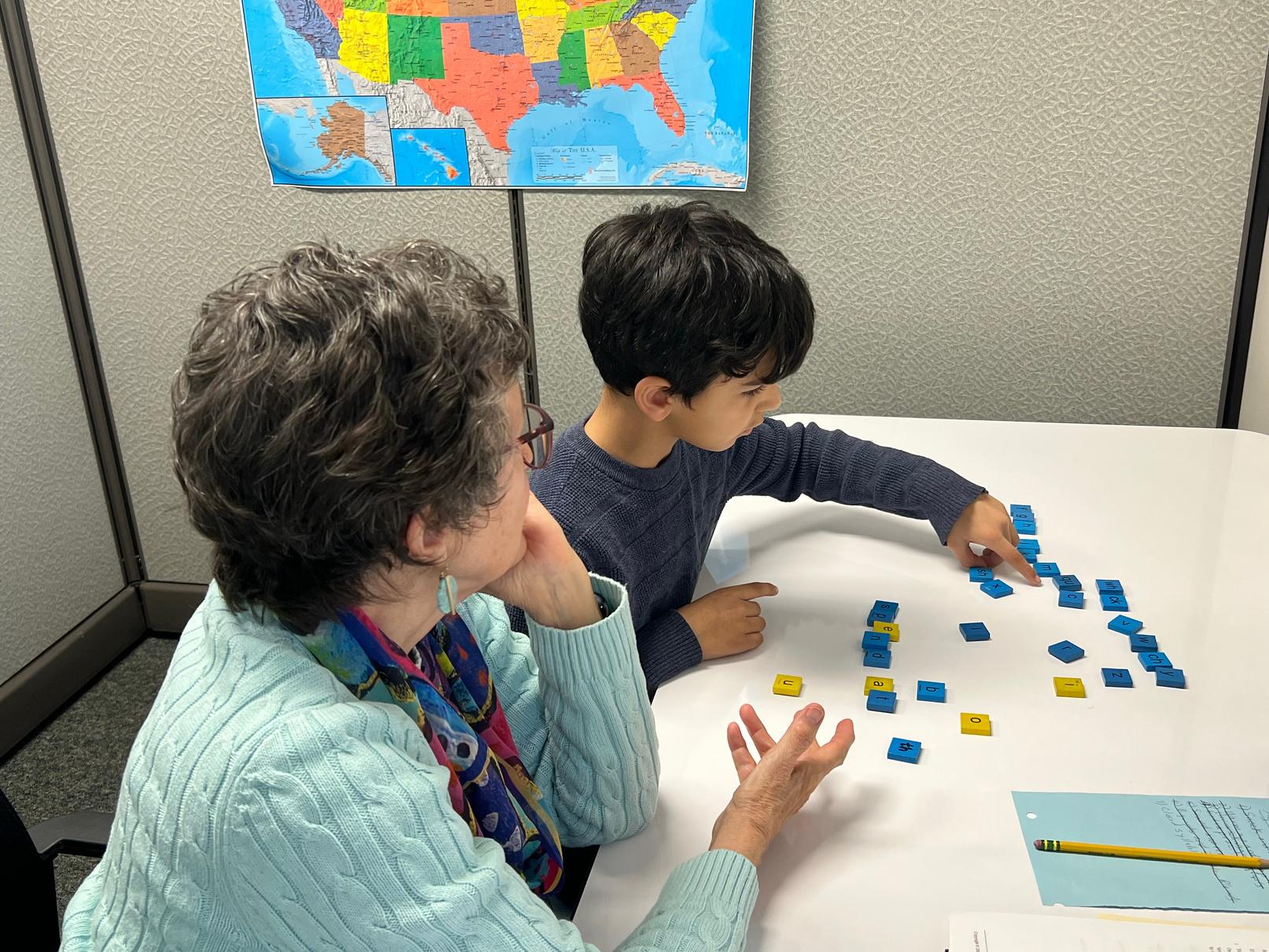

This is your year to read more. Join a book club at the Library!
gadml.librarycalendar.com


MAY 31 - AUGUST 9. Join us at the Library for the Summer Reading Kickoff on Saturday, May 31!
*The last day to report reading minutes and pick up prizes that were earned throughout the Reading Challenge is August 9. 2

CHECK OUT THE LIBRARY’S APP
Sign in to your Library account, check out upcoming events, renew your items, place items on hold, and more! 3
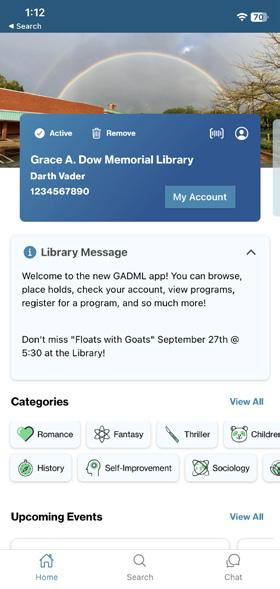
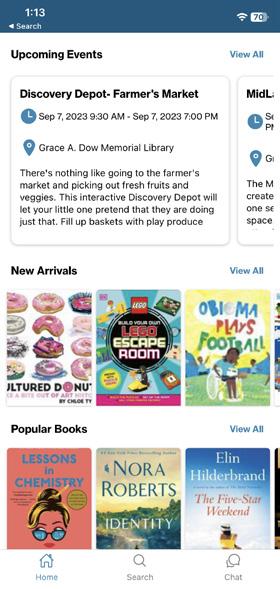
Hours: Monday - Thursday 9AM - 7:30PM, Friday & Saturday 10AM - 5PM

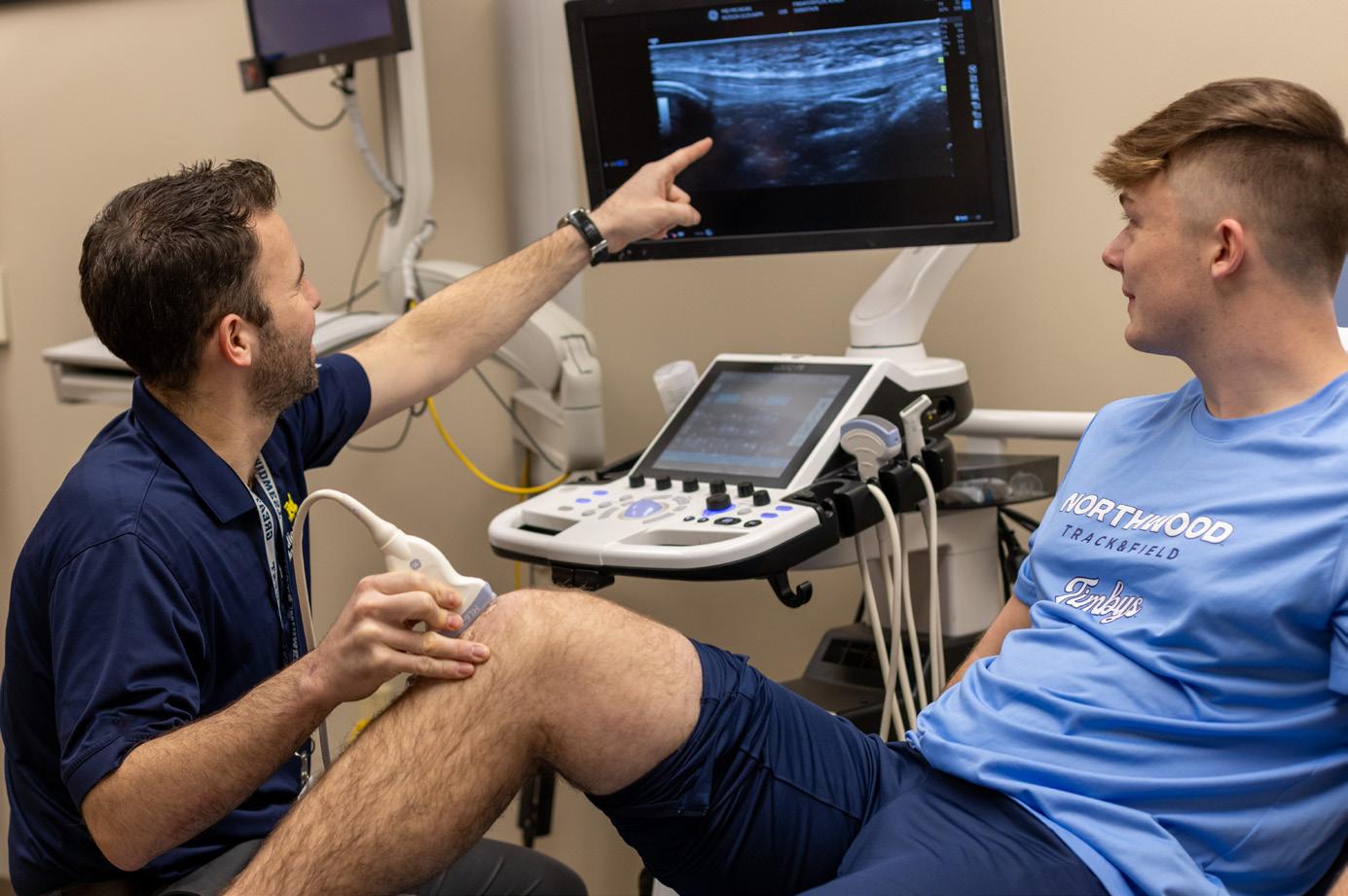
No matter what stage of life you’re in, the health of your muscles, bones and joints impacts your ability to get around and enjoy life. So where do you go when you’re experiencing pain and discomfort? You don’t need to go far, because you have a go-to musculoskeletal team ready to serve you at MyMichigan Medical Center
Midland Your go-to team has one goal in mind, to help you reach your highest level of function or performance. This experienced team offers advanced minimallyinvasive and robotic surgery treatment options and includes experts in general orthopedics, as well as surgical and non-surgical sports medicine. So whether your pain originates from your knee, hip, hand, elbow, shoulder, ankle or foot, we can help.
For help in scheduling an appointment with a non-surgical musculoskeletal specialist or orthopedic surgeon call (833) 923-3444